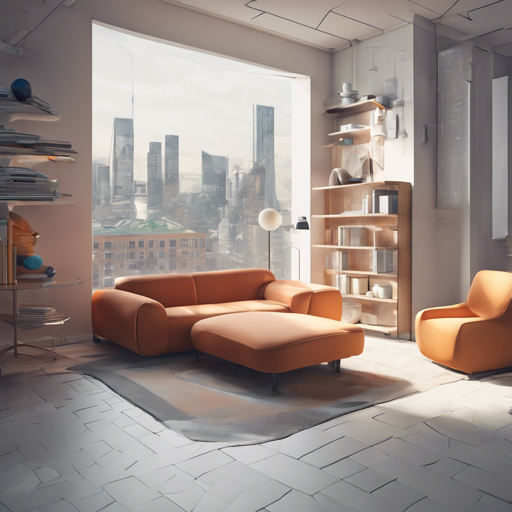In the world of computer vision, accurately estimating 3D bounding boxes around objects can greatly enhance our interactions with automated systems, whether in robotics, autonomous vehicles, or augmented reality applications. This blog will walk you through how to implement a 3D Bounding Box estimation using Deep Learning techniques with PyTorch, drawing insight from advanced geometric principles.
Introduction
In this blog, we will explore the implementation of the research paper on 3D Bounding Box estimation, primarily utilizing PyTorch. As of now, this method takes approximately 0.4 seconds per frame, depending on the number of objects detected, with plans for speed improvements in the future. Let’s visualize the outcome:

And here’s a quick video demonstration:

Requirements
- PyTorch
- CUDA
- OpenCV 3.4.3
Usage
Let’s discuss how to get started with using this model effectively:
cd weights
get_weights.shThis command will download the pre-trained weights for the 3D Bounding Box net alongside YOLOv3 weights from the official YOLO source. If you encounter issues with this script, they can be manually downloaded:
To see all the options available, run the following command:
python Run.py --helpTo process all images in the default directory (evalimage_2) with the option to draw 2D bounding boxes, use:
python Run.py [--show-yolo]Press SPACE to proceed to the next image, and any other key to exit.
To analyze a video, simply download the default video from the Kitti dataset or specify other locations for your videos:
python Run.py --video [--hide-debug]Training
The training phase requires downloading data from Kitti. You need to grab the left color images, training labels, and camera calibration matrices, totaling around 13GB. After downloading, unzip the files into the Kitti directory, then run the following command:
python Train.pyBy default, the model saves every 10 epochs, while the loss is printed every 10 batches. Note that the loss should not converge to 0! Negative loss is expected for orientation. The hyperparameters alpha and w will need tuning, and in just 10 epochs, good results can already be achieved.
How It Works
Think of a painter creating a 3D sculpture from a flat photograph. The neural network ingests images sized 224×224 pixels and predicts the orientation and relative dimensions of an object based on class averages. To draw a tight bounding box, we also leverage another neural network—YOLOv3—through OpenCV.
The network combines orientation, dimensions, and the 2D bounding box to compute the 3D location of an object, projecting it back onto the image. This process relies on two assumptions:
- The 2D bounding box tightly surrounds the object.
- The object maintains zero pitch and roll (which works well for objects like cars on the road).
Future Goals
This project aims to:
- Train a custom YOLO net on the Kitti dataset.
- Implement some type of Pose visualization (maybe using ROS?).
Troubleshooting
If you encounter issues while following the steps or during implementation, here are some pointers:
- Ensure all requirements are correctly installed and compatible versions are used.
- Double-check the paths to your weights and data; incorrect paths may lead to errors in loading models.
- Refer to the official paper for deeper understanding and to troubleshoot specific algorithmic issues.
If additional assistance is needed, feel free to reach out for community support or explore more insights on this topic. For more insights, updates, or to collaborate on AI development projects, stay connected with fxis.ai.
At fxis.ai, we believe that such advancements are crucial for the future of AI, as they enable more comprehensive and effective solutions. Our team is continually exploring new methodologies to push the envelope in artificial intelligence, ensuring that our clients benefit from the latest technological innovations.

